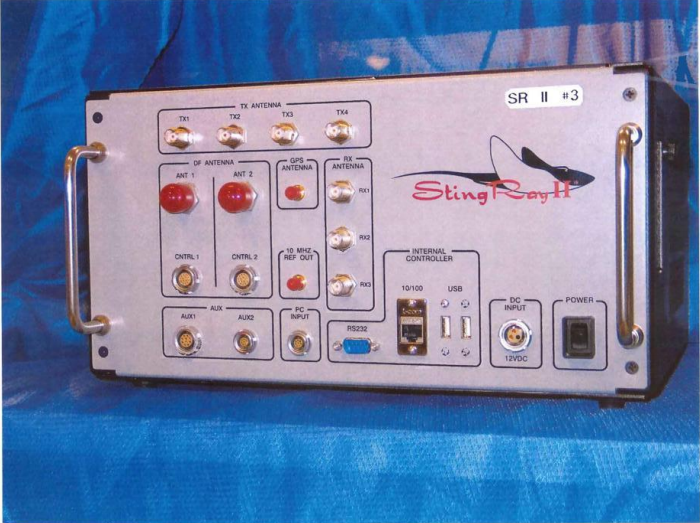FBI spy planes exposed as report reveals how US intelligence tracks targets from the sky

An investigation into the controversial use of domestic spy planes over US airspace has, in unprecedented detail, exposed how law enforcement from the FBI and Department of Homeland Security (DHS) use the skies to spy. Surveillance planes analysed in the report were fitted with high-resolution video cameras, 'augmented reality' software and, in some cases, so-called 'stingray' devices to intercept and track mobile devices of targets on the ground.
According to Buzzfeed News, which analysed flights between August and December last year using tracking website Flightrader24, roughly 200 federal aircraft were found to be in operation across the US. According to the DHS, which remained tight-lipped on information about individual cases, the aircraft are routinely used to secure the nation's borders, target drug smugglers and combat human trafficking. The DHS did also admit that the craft also aids local law enforcement operations when needed.
Carlos Lazo, a spokesman for the DHS, told Buzzfeed News that use of its planes "resulted in 706 arrests including violent criminals and sex traffickers, the seizure of more than 10,000 lbs of cocaine, 342 lbs of heroin, more than 1,000 lbs of methamphetamine, 350 weapons, and $24 million in cash." Meanwhile, the DHS denied, outright, that use of the controversial aircraft constituted mass surveillance.

The analysis also revealed how the sky cops use surveillance when responding to live terrorism attacks. For example, within two hours of the San Bernardino attack last December, two surveillance planes were deployed to the home of the Islamic State-inspired shooters Syed Rizwan Farook and Tashfeen Malik.
The day after the incident, FBI surveillance planes circled the airspace above a mosque that Farook frequented.
The technology on the planes is vast. The FBI aircraft, for example, boasts exhaust mufflers to reduce noise from the engines, night vision, infrared thermal imaging and even augmented reality – which embeds satellite imagery over live camera feeds to create a better picture of surrounding areas. However, concerns have consistently been raised about the surveillance capabilities on-board these aircraft, which can be used to circle locations for hours at a time if needed.
The use of so-called 'stingray' technology, for example, has long been criticised by privacy advocacy groups for its potentially invasive snooping abilities. Additionally, as Buzzfeed News noted, devices called 'cell-site simulators' can mimic phone towers that trick handsets into connecting them to intercept communications.
Ground control to Uncle Sam
Stingrays are just one form of spy device used by law enforcement to track mobile signals from up to 200m above the ground. A 2014 investigation by the American Civil Liberties Union (ACLU) exposed the use of such tracking devices by US law enforcement. Based on 'internal documents' obtained via Freedom of Information (FoI) requests, the ACLU claimed police were also "deliberately concealing" the use of stingrays in court documentation.

Addressing the use of stringray technology, Nathan Wessler, ACLU staff attorney, said: "This dragnet surveillance workhorse has been deployed for years by numerous local law enforcement agencies across the United States. Upside: fierce name. Downsides: ensnares bystanders' phones within up to 200 meters, drains phones' batteries by forcing them to broadcast at full power for greater surveillance potential, and can block calls placed by nearby phones."
In a statement issued in June 2015, the FBI said it "should come as no surprise" that the agency deploys planes to follow terrorists, spies and criminals. "We have an obligation to follow those people who want to hurt our country and its citizens, and we will continue to do so," said FBI Deputy Director Mark Giuliano at the time.
He added: "These aircraft are not equipped, designed, or used for bulk collection activities or mass surveillance, and are not routinely equipped with cell site simulators. With a court order, or under exigent circumstances such as a hostage situation, the aircraft can be fitted to include a cell site simulator. However, this is rarely utilised, and only with senior level approval."
© Copyright IBTimes 2025. All rights reserved.






















